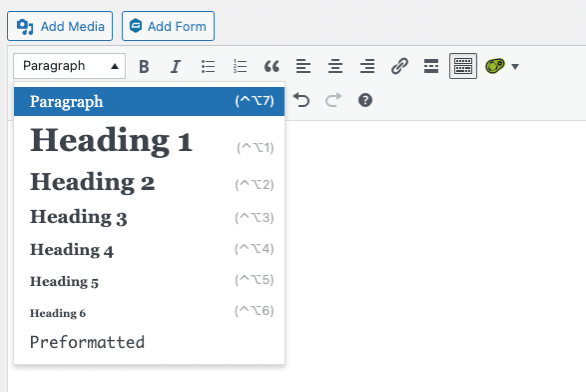Jess Gibbs, head of digital at Cornerstone Design & Marketing, spills the secrets on how to create great content that hits the SEO spot.
“It’s a bit of a dark art all that SEO stuff, isn’t it?”
This was the rhetorical question a long-standing leisure client posed to me once. It was around four years ago and, while they conceded they didn’t know much about “that SEO stuff”, they saw the value.
Fast forward through a global pandemic and into what will no doubt be further difficult conditions for the leisure industry to navigate, and I’ve put together my top tips to give the FitPro audience the upper hand on outranking their competitors in an increasingly competitive arena.
The benefits of SEO are almost endless; by putting time into optimising your website in the right way, you have the power to expand brand awareness, reach new audiences, increase revenue, maximise the effect of other marketing comms and get a leg up on the competition by ensuring your website ranks for keywords that support your wider business objectives, all for minimal cost to your business.
But with all those undeniable benefits comes challenges too: lack of resource, unstructured strategy, stakeholder buy-in and aligning across departments to name but a few.
Despite potential barriers to achieving SEO success, there’s one influence on your Google rankings that almost anyone can optimise to ensure a better performance within the SERP (Search Engine Results Page): content.
Content on your website is just one small pillar of a successful SEO strategy, but it’s an important one. So, here are my top tips for writing content with SEO in mind:
1. Write for your user
Before we jump into all the ‘techy’ stuff, it’s important to highlight that Google is placing more and more importance on content that provides value to the user. Over the last couple of years, we’ve seen Google algorithm updates place emphasis on EAT (Expertise, Authority, Trust) and BERT (Google’s neural network-based technique for natural language processing [NLP]).
All of this means that, when Google ‘reads’ your website, it’s looking for key markers of quality content and potentially penalising sites that use techniques that are clearly trying to hack the system for SEO benefit.
But what are these key markers of quality content?
It boils down to longer form, structured content that fulfils a user search query.
Ask yourself what is the content you’re writing aiming to achieve? What user problems is it solving? Does it answer user questions in an easy-to-understand yet comprehensive way?
2. Include keywords
Now, the above isn’t to say that the long-term principal of keywords, which most associate with SEO, is dead. You should still consider appropriate, meaningful use of relevant keywords throughout your content.
Using keywords at pivotal points in your content, such as headings, is a stronger signal to Google that this-is-what-my-content-is-about over ‘keyword stuffing’ (overusing keywords in content, usually leading to Google penalising your site).
If you’re unsure of which keywords you should be using in your content, there are plenty of keyword research tools to help you find out, including Google’s Keyword Planner, Chrome extensions such as Keywords Everywhere, and websites like Answer the Public.
3. Consider all angles
Conducting keyword research will also help you to understand all bases you need to cover within your content, allowing you to provide the most robust piece of content to fulfil your users’ search intention. But it shouldn’t just stop at publishing content on your own site.
By aligning your SEO plan with a robust PR campaign strategy, you not only have the potential to reach users via Google but you can gain coverage in online media regionally, nationally and internationally. And this is where the really good stuff happens …. If the publication includes a link to your original blog, or even just your home page, this link back to your site (backlink) is a strong signal to Google that your site is reputable and it’s more likely that Google will then boost your rankings for the content over competition.
The more quality backlinks you can gather to your site, the stronger SEO value you’ll generate.
4. Header tags
As well as producing quality content on your site and potentially to generate press coverage, you should be paying attention to how you structure that content when publishing.
Using header tags is a strong signal to Google of the importance of your content. Header one tags (H1s) are usually your main title, with header two tags (H2s) being used as a sub title. There are then header three, four, five and six tags. H1s and H2s carry a good amount of SEO weight, so really think about how you’re wording these headers: is there a good, natural opportunity to include a keyword?
Make sure your H1 is first on the page, followed by your H2s. A logical and hierarchical page structure shows that the most important piece of information (H1) comes first, with secondary information (H2) following thereafter.
It is recommended you don’t use more than one H1 and use H2s sparingly, with H3+ tags fine to be used liberally. That said, a Google representative confirmed that multiple H1s on a site don’t necessarily have a negative impact on SEO.
You can implement header tags when publishing content on your site by using the formatting tools, as seen here within a traditional WordPress CMS:
5. Use internal links
As well as generating backlinks, internal links are also incredibly strong signals for Google and can add a lot of SEO value.
If a new piece of content references topics that you already have published content on, link to it. The value of the quality content you’re writing will pass value to any linked page, as long as it’s relevant. This is usually most valuable where a longer blog, insight or case study piece references a core product, service or industry page. The value of the longer content is then passed to the product or service page that is potentially lighter in content.
6. Remember alt attributes
If you’re including images in your content, there will be an option to attach alt text to your image. The primary function of an alt attribute is to support people who use screen readers and partially sighted web visitors to understand what the image is of. Making sure you include an alt attribute can also contribute towards SEO efforts but making sure the image is accurately represented is the primary function. If there happens to be an opportunity to include a keyword or keyword adjacent in there, even better.
7. Page titles and meta descriptions
Depending on which CMS you’re using, there should be the ability to edit your page title and meta description. If you’re using a WordPress CMS, consider installing the Yoast or RankMath plugin to give you complete control over these elements.
Page titles are the titles you see within Google and, by curating your own, you’re able to ensure that the relevant page on your site is ranking for the desired keyword. For example, by including ‘leisure marketing agency’ in the title of one of the pages on our website, we were able to bolster the topic value of this page and land a 1st position ranking.

The description, as can be seen in the above, can also be edited in order to improve SEO efforts. However, recent Google algorithm updates have seen Google generate its own descriptions regardless of your custom choices, which has raised a question of how much value meta descriptions hold and how much time and effort site owners should put into curating each and every one.
By following the above advice, the next time you create content for your website, you should be well equipped to harness your wordsmithery with more SEO value than ever before, which is not only going to improve your users’ experience but also help to increase your own organic rankings and visibility.
Of course, this is just the first step. There’s a whole world of SEO to explore and SEO alone isn’t going to be enough to achieve your wider objectives. Bolstering SEO as part of an integrated marketing strategy will see you achieve wider brand awareness and more sales than SEO alone.
If you’d like to chat more about SEO or how you can use SEO as part of a wider marketing strategy, feel free to get in touch with Jess at Cornerstone Design & Marketing.
Ever wondered… How do I get started writing a blog post? Check out what resident FitPro writer and sub editor Aislinn Kelly suggests.
Author Bio:

Jess Gibbs is Head of Digital at Cornerstone Design & Marketing. Jess leads the strategy and execution of multi-channel digital marketing campaigns for clients across leisure, healthcare, pharma, B2B and eCommerce. Over her 5+ years with Cornerstone, Jess has supported award-winning campaigns with PPC, SEO, social media, email marketing and automation, analytics and CRO, and UX work. Jess now leads a full digital team of specialists at Cornerstone.








